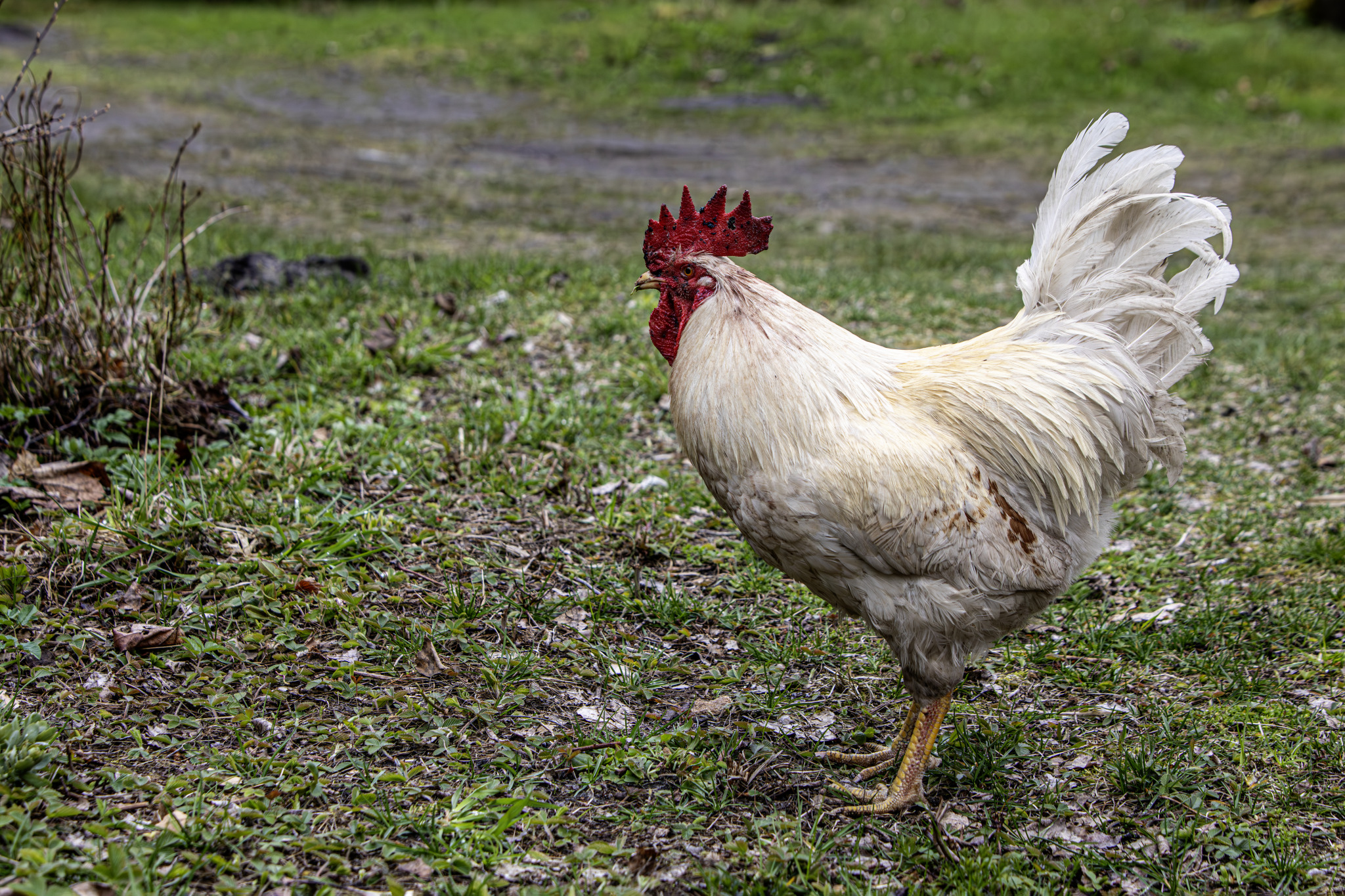The rooster (Gallus gallus domesticus), also known as the cockerel, is the adult male of the domestic chicken species. Known for its vibrant plumage, loud crowing, and dominant presence, the rooster is a symbol of vitality and vigilance across cultures.
Physical Description
- Size:
- Height: 50–70 cm.
- Weight: 2.5–4 kg, depending on the breed.
- Plumage:
- Brightly colored, often with metallic hues of red, gold, green, and blue.
- Long, arching tail feathers and prominent hackles around the neck.
- Comb and Wattles:
- Red, fleshy comb on the head and wattles beneath the beak, which are more pronounced in males.
- Spurs:
- Sharp, pointed growths on the back of the legs, used for defense and dominance displays.
Behavior
- Crowing:
- Loud, piercing “cock-a-doodle-doo” or equivalent in other languages.
- Typically serves to assert territory and signal the start of the day but can occur at any time.
- Social Structure:
- Dominates the flock, protecting hens and establishing a pecking order.
- Displays to attract mates and fend off rival males.
- Diet:
- Omnivorous: Eats grains, seeds, insects, and occasionally small animals.
Habitat
- Found in diverse environments due to domestication, including:
- Farms, rural areas, and urban backyards.
- Prefers areas with access to food, water, and shelter.
Reproductive Role
- Courtship:
- Performs a dance involving wing flapping and ground scraping to attract hens.
- Mating:
- Fertilizes eggs laid by hens, which are incubated until hatching.
- Offspring:
- Chicks are raised communally in some settings, though roosters do not actively participate in care.
Distribution
- Domesticated globally and found in nearly every country.
- Originated from the red junglefowl (Gallus gallus) native to Southeast Asia.
Cultural Significance
- Symbolism:
- Represents vigilance, strength, and masculinity in many cultures.
- Often featured in folklore, heraldry, and art.
- Religious Importance:
- Sacred in some traditions, such as Zoroastrianism, where it symbolizes light and victory over darkness.
- National Symbol:
- The rooster is an emblem of France, representing pride and resilience.
Ecological Role
- Seed Dispersal:
- Helps spread seeds while foraging.
- Pest Control:
- Consumes insects, reducing pest populations.
Interesting Facts
- Crowing Ritual:
- Roosters crow at dawn due to their internal circadian rhythm, not just environmental light.
- Flock Defense:
- A rooster will defend its flock aggressively against predators, using its beak, claws, and spurs.
- Breed Variety:
- Hundreds of breeds exist, ranging from small Bantams to large Brahmas, with unique plumage and characteristics.
Summary
The rooster (Gallus gallus domesticus) is more than just a farm animal; it is a vibrant and culturally significant bird known for its crowing, bold behavior, and ornamental beauty. As a protector of its flock and a symbol of resilience, the rooster plays an integral role in agriculture, culture, and ecosystems worldwide. pest control and soil health when raised in free-range or backyard settings.
Visited 900 times, 6 visit(s) today
Views: 1205
Subscribe to the newsletter:
